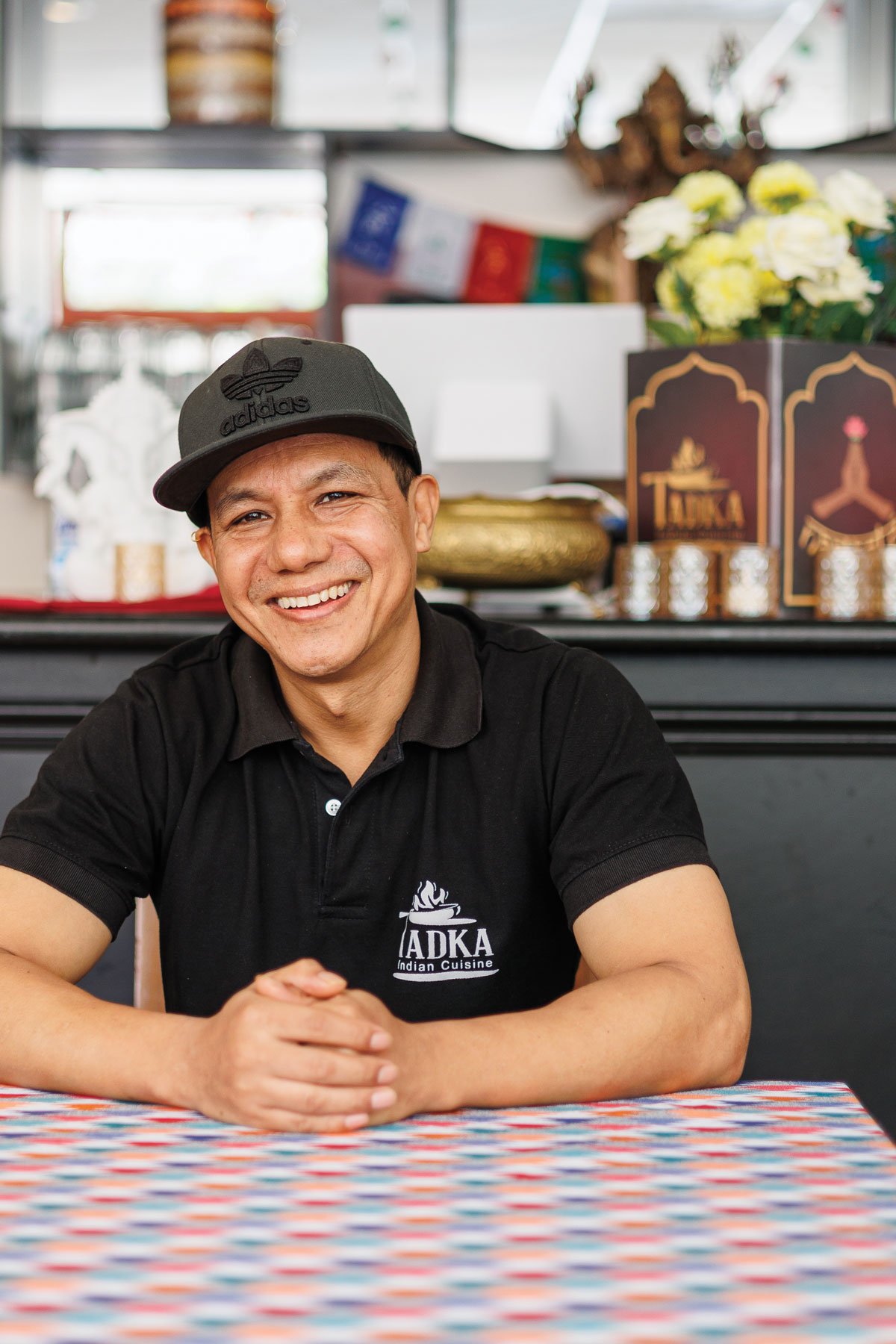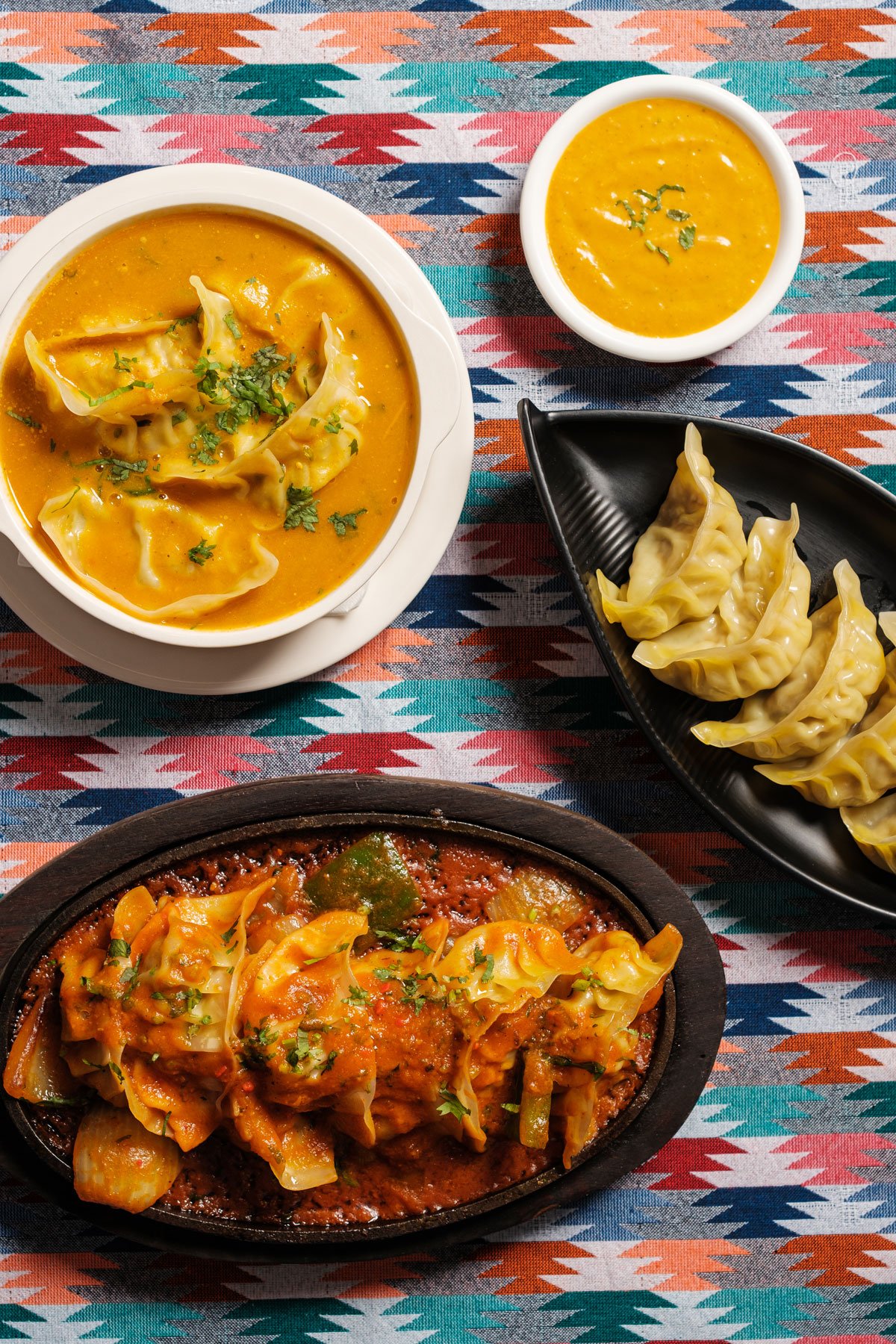PROFILE
Where
Indian Food
Comes Alive
Tadka chef Ganesh Shrestha’s
dishes are steeped in tradition—
even when he tweaks them
to suit local palates.
By Kawehi Haug
Photography by Aaron K. Yoshino
PROFILE
Tadka chef Ganesh Shrestha’s
dishes are steeped in tradition—
even when he tweaks them
to suit local palates.
By Kawehi Haug
Photography by Aaron K. Yoshino

More than occasionally, I have wondered why Honolulu seems to lack good Indian food. Sure, there’s passable stuff, enough to sate the yearning for a heat-spiked curry swooped up with a puffy round of naan-something. It’s almost … just right. After our first lunch at Tadka Indian Cuisine, my family and I looked at each other and nodded: Finally! A place to get good Indian food that really is just right.
If your experience with Indian cuisine is limited to saag paneer, butter chicken, chicken tikka masala and naan, the menu at Tadka will be a revelation. Ganesh Shrestha opened the restaurant at McCully Shopping Center last October. The former chef and partner in Spice Up House of Indian Cuisine ventured out on his own with a self-written playbook of what he wanted to add to the limited local Indian foodscape. His well-rounded menu showcases his Nepalese heritage and the vastness of Indian and South Asian flavors and techniques.
More than that, he knows his customers. “At Spice Up, I learned what people really want from my food,” Shrestha, 40, says. “I would get requests from my customers to modify the dishes to be less spicy or nondairy or to use less oil.” So he tweaks and reworks his recipes, making subtle adjustments to the classic tome of Indian restaurant dishes to suit the palates of local eaters.
Limiting the use of ghee, if that’s what someone wants, or replacing the cream in the saag curry with almond or coconut milk, isn’t selling out or being inauthentic, he says. Quite the opposite. His willingness to adapt to customers’ tastes is Shrestha’s way of being his most authentic self. He’s a hospitalitarian as much as a culinarian, and if you want zero spice in your lamb korma, just say the word. He’ll even cool the famously and intensely spicy vindaloo (which packs what he calls a 360-heat—you can’t escape when it’s slamming into you from all sides) if you really want him to. You shouldn’t if you want the real vindaloo experience. But that’s not the point.
“I’m so happy, the happiest, when I’m in the kitchen making food that I know my customers will like,” he says. “That’s why I cook. I don’t cook for myself. I cook for my guests.”
He’s sitting at an empty table in Tadka on a Monday, when the restaurant is closed. Mondays are for shopping and prepping and, in theory, resting up for the next six days when his place is wall-to-wall with diners at both lunch and dinner, with a line of people waiting to be seated. The resting part eludes him still. He knows that cutting corners will compromise his food, and so, like many chef-owners, he works from before sunrise until after midnight every day. His chef brain is in overdrive almost all the time; it’s how he creates dishes that stray just a tiny bit from traditional preparations to accommodate preferences that aren’t so traditional, without actually sacrificing tradition.
In Indian and South Asian cooking, the Hindi word “tadka” means to temper and bloom spices over heat. This technique allows the spices to reach their full potential before they’re added to recipes, imparting intense and deep flavors. It’s what I like to call a “mother technique”—a fundamental practice upon which a cuisine is built. Shrestha depends enormously on tadka’s reliable delivery of flavor when he leaves out things like ghee, cream and chiles. In a side-by-side comparison, I tasted his traditional saag curry with cream, and the dairy-free version with its coconut milk substitution. Both are lush, full-bodied and warm with intensely rich spice, neither one better than the other.
Shrestha doesn’t claim to be a Nepalese chef. He trained for 20 years under his mentor, a Punjabi chef in New York City. Since relocating to Hawai‘i about five years ago, he has been cooking mostly Indian food. At Tadka and Spice Up, he added a selection of momo, Nepalese street food dumplings that draw from his childhood. Filled with curry-scented chicken or vegetables that are steamed until they’re just on the sturdier side of al dente, the delicate dumplings are tossed on a sizzling platter until the bottoms are brown and crisp; then they’re smothered in a tangy tomato and onion chutney, or a deep yellow ‘ōlena-rich broth that’s earthy and slightly bitter with mustardy ripples of ginger and pepper.

SEE ALSO: What to Order at Tadka: Eat Like a Chef
Momo are one of the best things I’ve eaten in a very long time. It’s not restaurant food, but it belongs on restaurant menus. If Tadka were open late—it closes at 9 p.m.—inebriated and exhausted customers would order platters of momo and pani puri (deep-fried hollowed spheres filled with potato, onion and chickpeas, topped with a sweet and sour tamarind sauce and popped whole into your mouth) and be halfway to sober and lively by the time they left.
When I tell Shrestha I haven’t stopped thinking about the momo, he laughs quietly. His mom used to make them for him when he was a child in the south of Nepal. When I tell him that I especially love the brothy jhol momo, he seems moved. I recognize the look. It’s the one you get when you realize that your history, your own collection of life-worn memories, is telling the story you’ve been dying to tell. And it’s just right.
1960 Kapi‘olani Blvd., (808) 941-0414, @tadkaindiancuisine808